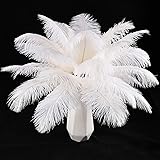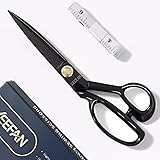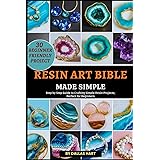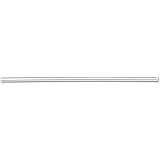Clever Upcycling Ideas: Transforming Household Items into Sustainable Solutions
Did you know that the average person in the United States generates around 4.9 pounds of waste per day? This staggering figure underscores the pressing need for more sustainable practices in our daily lives. While traditional recycling is crucial, the art of upcycling offers an even more creative and impactful way to reduce waste and give items a second life.
The video above showcases a fantastic array of ingenious upcycling life hacks and DIY crafts, demonstrating just how easily ordinary objects can be repurposed. From organizing clutter to enhancing your home décor, these simple yet effective transformations not only save you money but also contribute to a healthier planet. Let’s delve deeper into some of these creative reuse concepts and explore how you can integrate them into your own sustainable living journey.
Embrace the Power of Creative Reuse: Smart DIY Transformations
Harnessing the potential of items you might otherwise discard is at the heart of upcycling. The goal is to elevate an object’s value or utility in its new form. These clever hacks exemplify how minimal effort can yield significant results, turning everyday waste into functional treasures.
1. Innovative Cable Management with Straws
Tangled cables are a common nuisance in modern homes and offices, often leading to clutter and potential safety hazards. The simple act of using a straw as a cable organizer, as seen in the video, offers an elegant solution. By slicing a straw lengthwise, you can wrap it around unruly wires, bundling them neatly and keeping your workspace tidy.
This method is particularly effective for thinner cables like phone chargers, earphone cords, or even small appliance wires. Not only does it improve aesthetics, but it also prolongs the life of your cables by preventing kinks and damage. Consider color-coding your straws for even better organization, making it easy to identify which cable belongs where.
2. Repurposing Shampoo Bottles for Bathroom Organization
Empty shampoo bottles often end up in the recycling bin, but with a bit of creativity, they can be transformed into practical bathroom accessories. The video demonstrates creating a sink caddy or a hanging organizer from these sturdy containers. By cutting and shaping the plastic, you can craft custom holders for sponges, brushes, or even small toiletries.
These upcycled organizers are incredibly versatile. A sink caddy can keep your washing-up sponge dry and accessible, while a hanging organizer (perhaps with a suction cup or hook) can free up counter space in the shower or near the sink. This kind of creative reuse not only reduces plastic waste but also provides bespoke storage solutions tailored to your needs.
3. The Mighty Silica Packet: Beyond Shoe Boxes
Those small silica gel packets found in new shoes, electronics, and various product packaging are often overlooked, yet they are incredibly powerful desiccants. The video highlights their ability to absorb moisture and prevent rust, which is just one of their many uses. Silica gel works by drawing moisture out of the air, creating a drier environment.
Beyond protecting tools from rust, these packets can be invaluable in other areas. Place them in gym bags to combat dampness and odors, tuck them into photo albums to prevent moisture damage to precious memories, or even drop a few into a pill bottle to keep medications fresh. Saving these packets from the bin means you always have a natural moisture absorber on hand.
4. Shoeboxes: The Ultimate Makeup and Drawer Organizers
Cardboard shoeboxes are surprisingly robust and incredibly versatile for upcycling. The video cleverly showcases their transformation into a makeup organizer. This idea can be expanded upon significantly, as shoeboxes are perfect for creating custom drawer dividers or storage compartments for a wide array of items.
To create a truly custom organizer, you can cut the shoeboxes into smaller sections or use the lids as trays. Decorate them with paint, fabric scraps, or decorative paper to match your room’s aesthetic. These custom organizers can declutter craft supplies, office stationery, jewelry, or even pantry items, proving that effective organization doesn’t have to be expensive.
5. Innovative Solutions for Cotton Round Dispensing and Even Ripening
The video presents two distinct yet equally clever hacks concerning specific household items. First, the creation of a cotton round dispenser using a knife, industrial glue, and paper demonstrates ingenious problem-solving. This keeps cotton rounds hygienic, easily accessible, and adds a touch of bespoke charm to your vanity.
Secondly, the simple technique for achieving even fruit ripening addresses a common kitchen frustration. By strategically altering the environment around produce (as implied by the “uneven ripening?” to “ripens evenly!” sequence), you can control the ethylene gas production, which is crucial for uniform ripening. This might involve isolating fruits or providing specific aeration, extending their life and reducing food waste.
6. Crafting Unique Back Scratchers and Fidget Spinners
Upcycling extends to creating fun and functional gadgets, as demonstrated by the DIY back scratcher and fidget spinner. The process of baking and drying to create a durable back scratcher suggests the use of materials like salt dough or polymer clay, offering a personalized touch to a common household tool. This allows for ergonomic designs perfectly suited to individual needs.
The fidget spinner made from a frame, game pieces, Velcro, and sand highlights creative problem-solving and resourcefulness. By combining various small, discarded items, you can construct engaging toys that stimulate creativity and provide tactile feedback. This not only breathes new life into old game pieces but also provides a custom-made item that caters to specific sensory preferences.
7. Transforming Textiles into Non-Slip Mats
Old textiles, such as a worn-out pillow or a dollar store rug, can find new purpose as a non-slip mat. The video’s instruction to “Boil FOR 10 MIN” suggests a process to prepare the fabric or activate certain properties for grip. This might involve a method to soften the material for better adhesion when combined with a rubberized backing or to improve its texture for added friction.
A non-slip mat is a safety essential, particularly in bathrooms, kitchens, or entryways where spills can occur. Creating one from upcycled materials is an eco-friendly way to prevent accidents. You can custom-size these mats for specific areas, adding a layer of comfort and security where needed, all while diverting textiles from landfills.
8. The Wonders of a Self-Watering Planter
For plant enthusiasts or those with a busy schedule, a self-watering planter is a game-changer. The video outlines the key components: cotton thread, acetone, cold water, and soil. The cotton thread acts as a wick, drawing water up from a reservoir (often the bottom of the container) into the soil through capillary action, keeping the plant consistently hydrated.
This ingenious system ensures your plants receive a steady supply of moisture, preventing both overwatering and underwatering. Acetone might be used for preparing the plastic surface for better thread insertion or sealing, while cold water is simply for hydration. Creating these planters from plastic bottles or other containers is an excellent way to support your green thumb sustainably.
9. Parchment Paper for a Streak-Free Clean
Beyond its culinary applications, parchment paper can be an unexpected ally in your cleaning routine. The video briefly indicates its use for cleaning, and this is because its slightly waxy or silicone-coated surface can work wonders on certain materials. It’s particularly effective for polishing stainless steel appliances, faucets, or glass surfaces.
When used on these surfaces, parchment paper can help buff away smudges, fingerprints, and water spots, leaving a streak-free shine. Its non-abrasive nature means it won’t scratch delicate finishes, making it a surprisingly gentle yet effective cleaning tool. This is another example of how an everyday item can have multiple, overlooked uses.
Sustainable Living Through Upcycling
These inspiring upcycling ideas demonstrate that reducing waste and embracing a more sustainable lifestyle doesn’t require drastic changes; it simply calls for a shift in perspective. Every time we choose to upcycle, we’re not just creating something new; we’re actively participating in environmental preservation and resource conservation. From simple home organization solutions to creative craft projects, the world of upcycling is filled with endless possibilities.
By incorporating these upcycling principles into your daily routine, you can make a tangible difference. Not only will you save money and reduce your ecological footprint, but you’ll also foster a more creative and resourceful approach to the items around you. So, before you toss that next item, consider how you might upcycle it into something truly useful.







